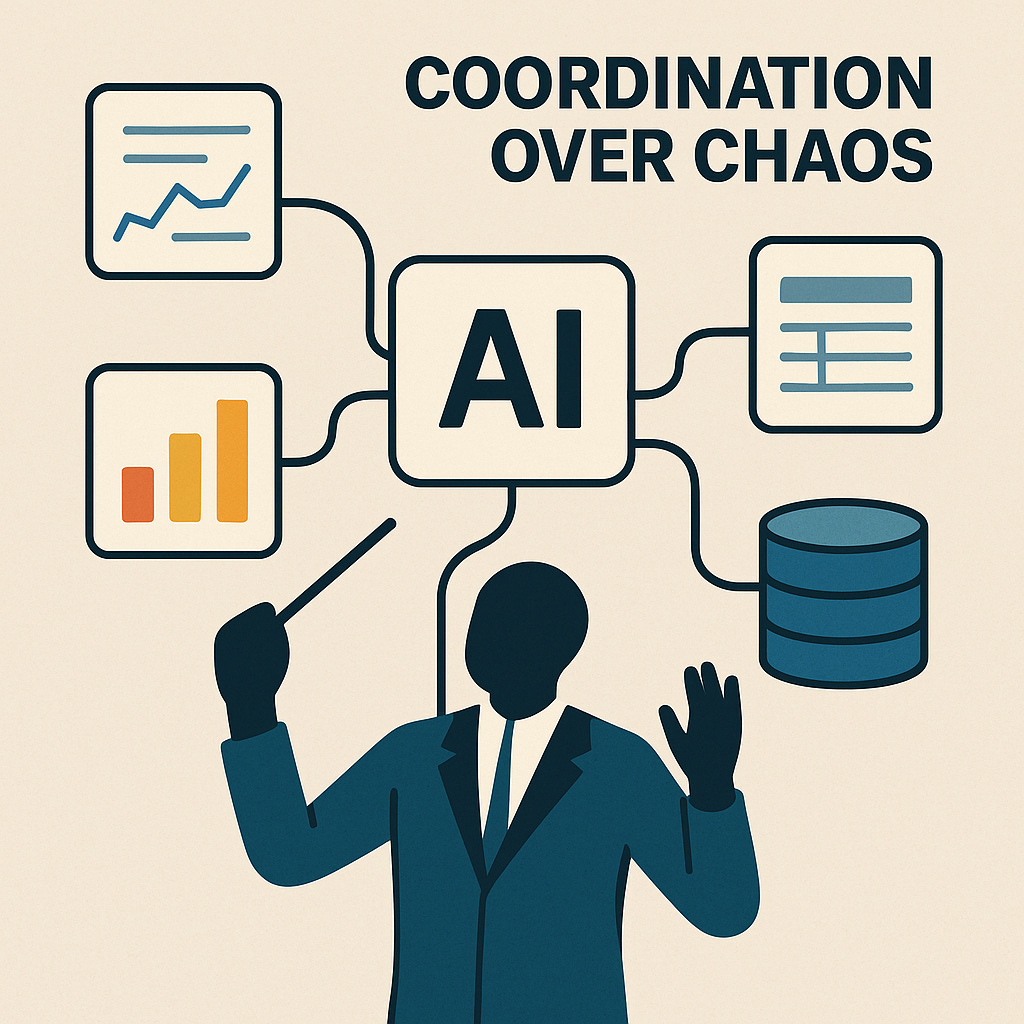Coordination Over Chaos
AI’s real gift isn’t another buzzword, it’s contextual coordination.
But let’s be clear: most companies aren’t there yet. We’re still buried under tools, alerts, and “platforms” that promised productivity and delivered context-switching. The dream of orchestration: systems talking to each other, work moving on its own - has been around for decades. The difference now is that AI might actually make it possible.
When used right, AI can act like connective tissue between your core systems. It’s not about replacing people or stacking more tech. It’s about reducing friction between decisions and actions. Cleaner data, faster loops, fewer handoffs - those aren’t buzzwords; they’re leverage.
The companies that win will spend less time managing tools and more time building momentum.
What’s Actually Changing
We’ve spent 20 years adding “best-in-class” everything: CRM, ERP, PLM, CPQ, HRIS, and hundreds more SaaS point solutions! Each one solved something but fragmented everything else.
AI doesn’t magically fix that. But it changes the economics of fixing it.
Suddenly, the cost of connecting systems, automating handoffs, or summarizing context drops dramatically. Agents can coordinate what integrations and humans used to—without massive middleware or endless API projects.
That’s real value. Not sexy. Not overnight. But foundational.
What’s Worth Building
The future belongs to organizations with fewer systems and more system—a backbone that’s designed for coordination, not control.
Build the Spine. Keep your CRM, ERP, and Data Cloud as the durable core. Make them boring and stable. That’s the point.
Bless the Anchors. Standardize how data moves. Resist the temptation to duct-tape every shiny new tool.
Let Agents Run the Playbook. Once you trust your foundation, give AI the room to orchestrate. Not to “think” for you, but to move work intelligently between people and platforms.
A Reality Check
AI won’t “run your business.” Most companies can’t even agree on what “source of truth” means. Coordination will take discipline, design, and time. But it’s the right direction.
The next decade belongs to the organizations that treat AI not as an add-on, but as an operating principle: use fewer tools, align the data, automate the in-between, and build systems that actually talk.
AI’s not the revolution. It’s the first time the old vision of connected enterprise might actually work they way we want it to.


